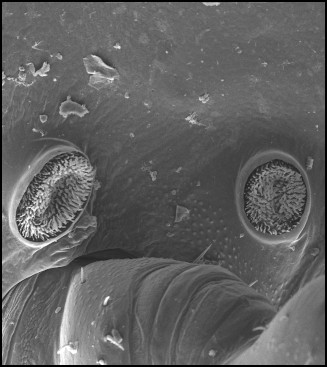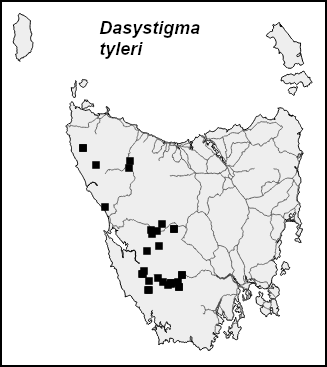Polydesmida: Dalodesmidae: Dasystigma
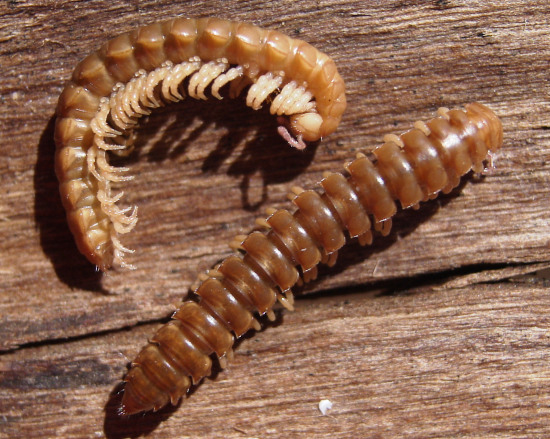
Dasystigma margaretae (Jeekel, 1984)
The four Dasystigma species are brown-coloured, H+20 endemics which reach 20-22 mm in length. Dasystigma spiracles are very odd. In most Dalodesmidae a spiracle is a small, inconspicuous, crater-like structure just above the base of a leg. Spiracles are the entrances to the system of tubes (tracheae) which carry air to the millipede's tissues. In Dasystigma, dense brushes of "hair"emerge from each spiracle. To the naked eye these "hairy" spiracles look white and slightly convex. In the top specimen in the image above, you can see a pair of these peculiar spiracles above the base of each leg-pair.
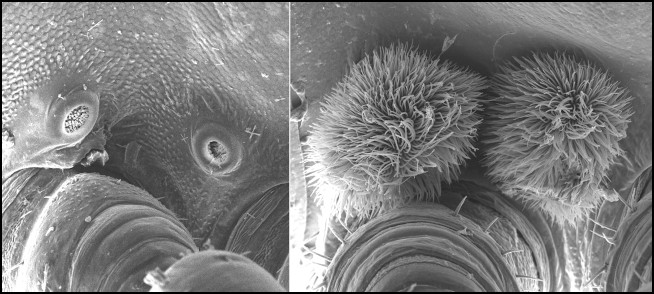
Spiracles of Lissodesmus modestus (left) and Dasystigma margaretae (right); head to left in each image
Dasystigma species form a tightly fitted distribution mosaic on the map of Tasmania, and it is possible to make an informed guess about the identity of a female or juvenile Dasystigma based on exactly where it was collected. However, only mature male Dasystigma can be positively identified to species, based on gonopod and spiracle structure.
Preliminary genetic results suggest that Dasystigma species are best classified as part of an expanded Lissodesmus. Like species of Lissodesmus, Dasystigma species are forest-dwellers that shelter in leaf and woody litter. The eastern species D. bonhami and D. margaretae and the southern D. huonense are much more abundant than the western D. tyleri, and are present (sometimes in large numbers) in eucalypt regrowth forest arising from clearfall-and-burn silviculture.
Dasystigma bonhami Mesibov, 2003
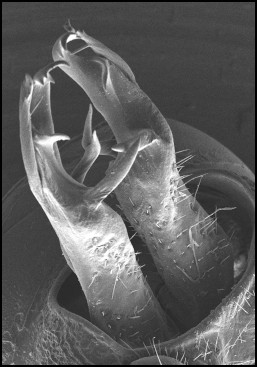
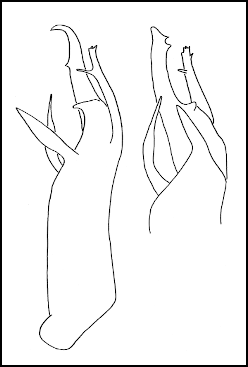
Drawings show lateral (left) and medial (right) views of left gonopod
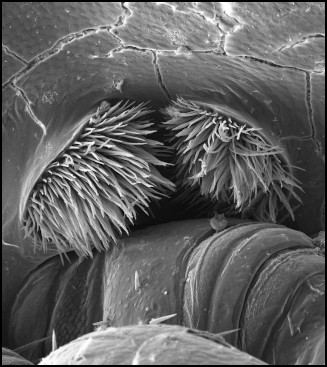
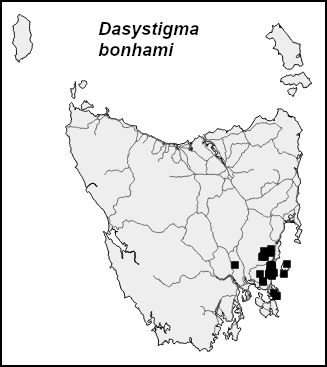
Dasystigma huonense Mesibov, 2003
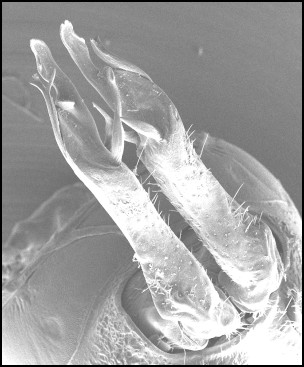
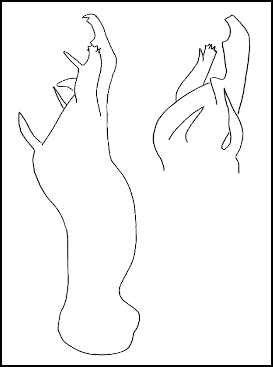
Drawings show lateral view of left gonopod (left) and medial view of right gonopod (right)
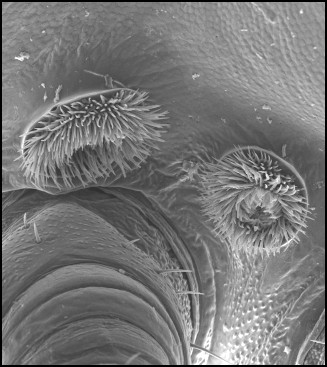
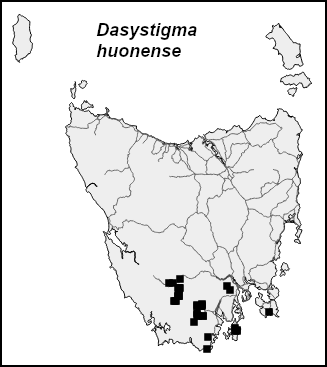
Dasystigma margaretae (Jeekel, 1984)
Dasystigma margaretae populations in the Derwent valley have the rear corners of the paranota extended and sharply pointed. This form could be confused at first glance with Lissodesmus modestus, which also occurs in the Derwent valley and also has pointed paranotal corners. Check the spiracles: large, white and close together in D. margaretae, small, crater-like and well-separated in L. modestus (see spiracle image near top of page). The Derwent valley D. margaretae also have less "hairy" spiracles (see below).
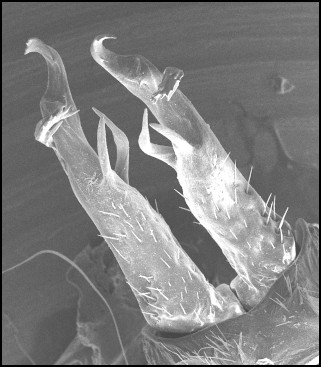
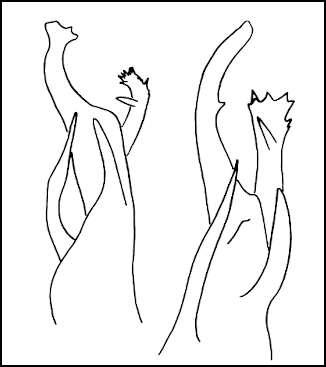
Drawings show medial views of left gonopod tips of males from type locality (left) and Derwent valley (right)
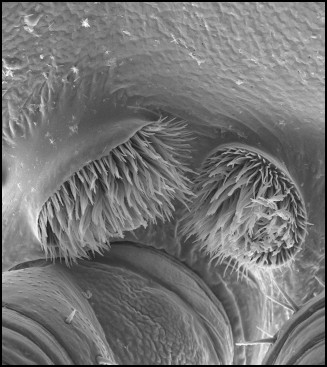
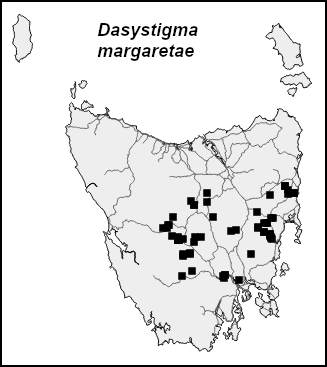
Dasystigma tyleri Mesibov, 2003
The spiracles in D. tyleri are much less "hairy" than in the other three Dasystigma species, and are also further apart.
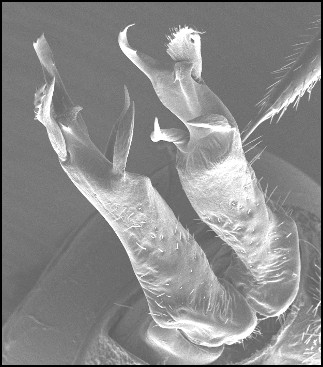
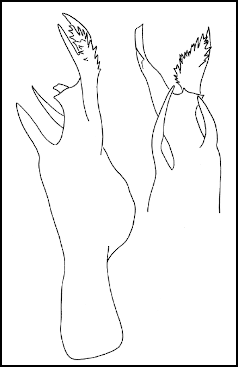
Drawings show lateral (left) and medial (right) views of left gonopod
